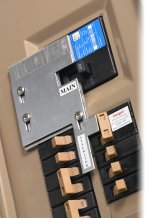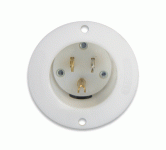kolyur
Lifetime Supporting Member + Moderator
Just bought a Yamaha inverter generator for home backup power. I want to run the necessary wiring so that any of the breakers in the main panel can be selectively energized (based on load capability of the generator of course). I'm aware that the correct way to do this is to either (1) use a transfer switch, or (2) wire the generator receptacle to a 2-pole breaker that is interlocked with the main breaker, so that they cannot be closed simultaneously. I plan to do the latter.
So far so good. The catch is that my generator is only 120v. You pay a premium for the inverter generators and I didn't want to spend $3000+ for 240v when I don't really need it. Essentially what I need to do is tie the main legs together when I'm running from generator power, so I can energize any of the single pole breakers. None of the 2-pole breakers will be used except the generator breaker (but I don't see a problem if one gets flipped, as there will be no potential difference across the legs).
The obvious solution is to just run the hot wire of the generator receptacle to one pole of the generator breaker, and put a jumper to the second pole. The breaker will be 20A and I will run 12awg to the 20A receptacle. Any thoughts on this codewise? Seems safe to me but Google is not turning up many similar installations.
So far so good. The catch is that my generator is only 120v. You pay a premium for the inverter generators and I didn't want to spend $3000+ for 240v when I don't really need it. Essentially what I need to do is tie the main legs together when I'm running from generator power, so I can energize any of the single pole breakers. None of the 2-pole breakers will be used except the generator breaker (but I don't see a problem if one gets flipped, as there will be no potential difference across the legs).
The obvious solution is to just run the hot wire of the generator receptacle to one pole of the generator breaker, and put a jumper to the second pole. The breaker will be 20A and I will run 12awg to the 20A receptacle. Any thoughts on this codewise? Seems safe to me but Google is not turning up many similar installations.
Last edited:





